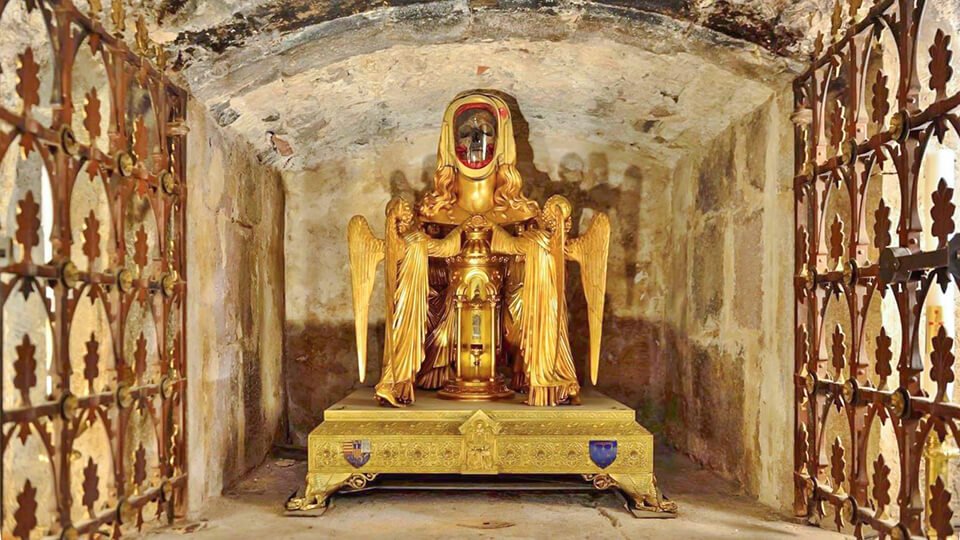Part II
What you might not know about Simon Magus
And his creation of the counterfeit-Christion church
Copyright 2021 by Joan Berry
After Simon Peters’ rebuke as discussed in Part I, Simon Magus went about creating his own church. He fully intended to replace Jesus and mix His teachings with those of his pagan religions. He further created mystical rites, initiation enchantments, and various sacraments that remain to this day, [This topic will be detailed later]. Gnostic religions were common at that time with its mystical and secret rites,
Gnosticism contained just enough of the gospel to attract Christians away from the apostolic church. In Rome, the Christian leaders failed to teach its members the difference between the true church and its counterfeit by Simon Magus. Gnostics also believed in secret knowledge that was forbidden to be shared outside their cult. One of their more restrictive dogmas was that marriage for sexual reproduction was evil and worthless; sexual pleasure was forbidden.
Parts of all of these religious ideas were combined by Simon Magus to create a universal (catholic) church. Simon Magus claimed to be a Christian, but in reality he was preaching paganism in the name of Christianity. Just as Jesus’ apostles ventured forth to spread the Good News through Asia Minor, Samaria, Palestine, and parts of Europe, Simon Magus adherents also traveled the same routes.
Following is an example of Simon’s power in 42 C.E. when Claudius Caesar was the emperor of the Roman Empire: In this account, Simon Magus arrived in Rome and demonstrated many of his magical powers for the emperor, who was so impressed that he declared the sorcerer to be a god and had a statue honoring him placed between two bridges on the Tiber River. Simon Magus became a favorite of the emperor as well as his successor, Nero. Furthermore, to show how important the event was, prior to the emperor’s honoring Simon Magus, it was forbidden to erect a statue to any man regarded as a god or celebrating someone of honor.
Meanwhile Simon Peter had been traveling after spending two years in Rome. He remained in Britain for a period of time, and then to Pontus and other Jewish communities, Antioch, and Jerusalem, According to historians, he spent most of his time traveling in European countries and finally returned to Rome in the late years of Nero’s reign as emperor of the Roman Empire. When he arrived in Rome in 67C.E. he found that much of the populace seemed to be acting as if they were under a spell and were rejecting apostolic teaching because Simon Magus had enticed the people with his sorceries. This prompted Peter to begin preaching against the heresies of Simon Magus.
There are several accounts of how Simon Magus died, but the following account is provable: The confrontations between the two Simons came to the point that Simon Peter challenged Simon Magus to a test of powers. The contest took place in front of the forum in the presence of the prefect of Rome and an audience. A kinsman of the prefect had previously died. Simon Magus bragged that he could raise the young man from the dead, but he failed. However, Simon Peter restored the man to life. Every test was met in a success for the apostle. The final test came from Simon Magus who decided to fly above the forum to impress the prefect and be richly rewarded. He jumped from a tower that stood on the hill behind the forum and as he levitated from there, Simon Peter rebuked the evil spirits that were holding him up and Simon crashed to the ground crushing his feet and breaking a leg. He survived the fall, only to have his feet amputated, and died from the poor care by unskilled doctors.
Christians were still being persecuted because they were considered by Nero to be a danger to the empire and he was known to dislike Simon Peter. When the news of Simon Magus’ death and who was responsible for it reached Nero in Greece, he ordered the arrest of Simon Peter who then was held in the Mamertine Prison until Nero’s return. The emperor was well known for his cruelty and not long after his return to Rome, he ordered Peter’s crucifixion in the famed Circus [some of which exists today].
Simon Peter was first buried beside the chariot race track at the Circus until his fellow Christians removed his body and reinterred it near the Triumph Way and built a small church over the grave. Peter’s bones had been placed in a small bronze casket. Around 220 C. E., the church was destroyed and Peter’s bones were once again removed. This time, they were moved to a cemetery on the Appian Way about two miles from Rome. In this place Peter and Paul’s remains shared a grave. Emperor Constantine, to please the populace, removed the bones of Peter and Paul from the Appian Way and placed them in a grave along with the bones of Simon Magus beneath his recently constructed basilica.
Peter and Paul’s remains were removed one more and final time. In 656 C. E., Pope Vitalian determined that the Roman Catholic Church no longer cared about the relics and had them delivered to King Oswy of Britain. The arrival of the relics was recorded along with the letter from the pope. Today, these items remain available in the archives of Canterbury Cathedral.
* *
Part III covers Simon Magus and his influence in the Roman Catholic Church.
Sources
Bible Gateway.com (n.d.). https://w.w.w.biblegateway.com
Britannica, T. Editors of Encyclopaedia (2020, May 6). Simon Magus. Encyclopedia Britannica. https://www.britannica.com/biography/Simon-Magus
Duck, Daymond R. (1998). Revelation: God’s Word for the Biblical Inept. Lancaster PA. Starburst Publishers
Grudem, W. (1994). Systematic Theology: An Introduction to Bible Doctrine. Grand Rapids MI. Zondervan Pub.
Holy Bible from the Ancient Eastern Text. (1957). Lamsa, George M. Trans,). From the Aramatic of the Peshitta. Harper, San Francisco.
Josephus: The Complete Works.(1998). Whiston, William, Trans.). Nashville TN. Thomas Nelson Publishers.
Life Application New Testament Commentary. (2011). Barton, Bruce et al. Wheaton IL. Tyndale Publishers.
*Martin, E. L. & Keyser, J.D. Simon Magus and the origin of the Catholic Church (n.d.). w.w.w.hope-of-isreal.org
McGraph, Alister. (2011). Christian Theology 5th ed. Kings College. London UK. Wiley-Blackwell Publishers.
New King James Study Bible. (2007). Radmacher, Earl D. general editor. Nashville TN. Harper.
The Amplified Bible. (1987). Grand Rapids MI. Zondervan House publishers.
The Apologetics Study Bible: Cristian Standard Bible. (2017). Cabal, Ted, general editor. Nashville TN. Holman Bible Publishers.
The Christian Theology Reader 4th ed. (2011). McGraph, Alister, ed. Kings College, London UK. Wiley-Blackwell.
Bible references:
Acts 8: 9-21; 1: 23-26
II Thess. 2 : 7
Matt. 10: 5-6
John 4: 9, 12
Rev. 2: 9; 3: 9; 2: 2; 2:20
I Kings 16: 31 Jezebel
I Kings 12: 28-30
II Kings 17: 24-41
II Chron. 11: 14
.

